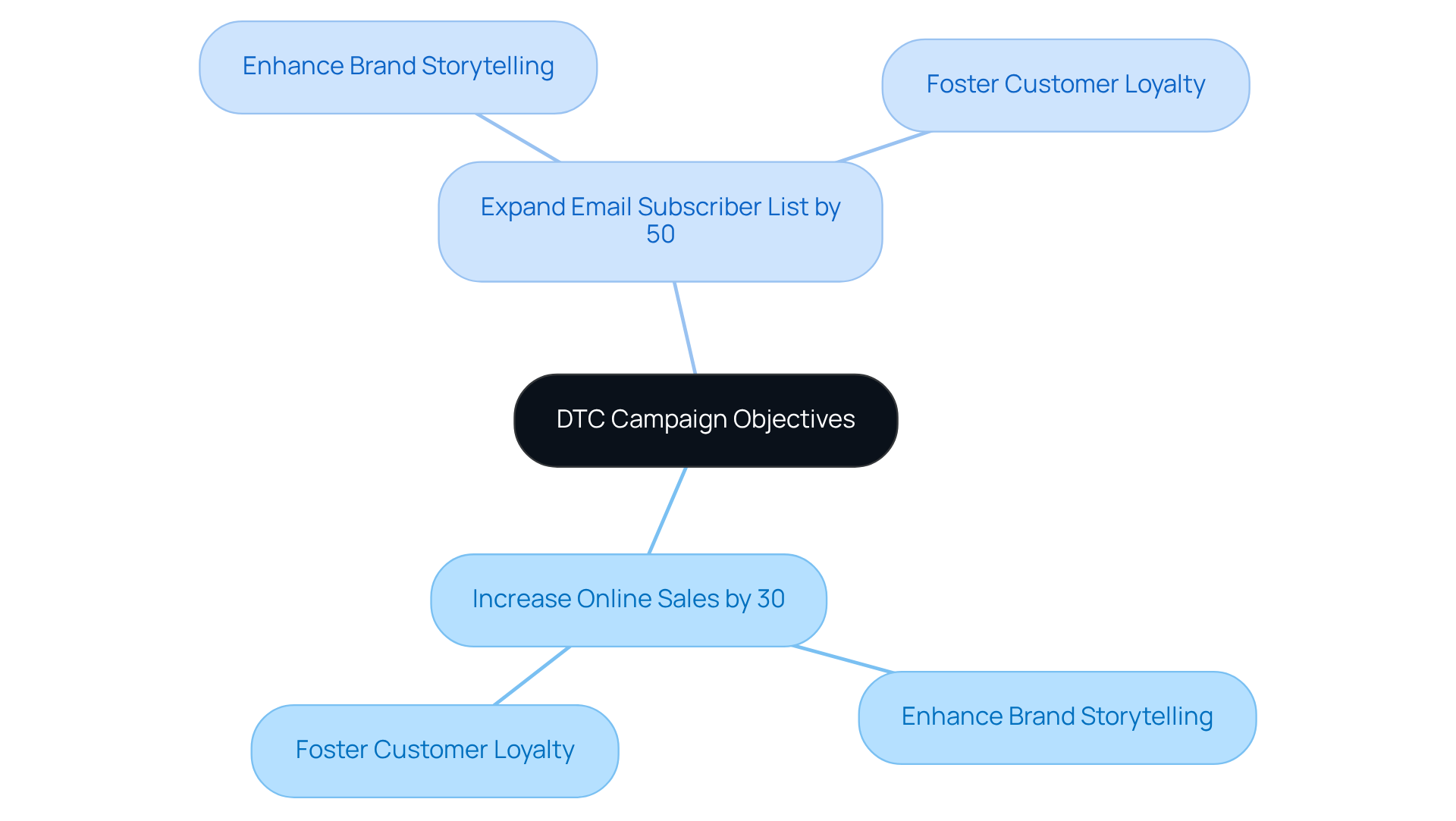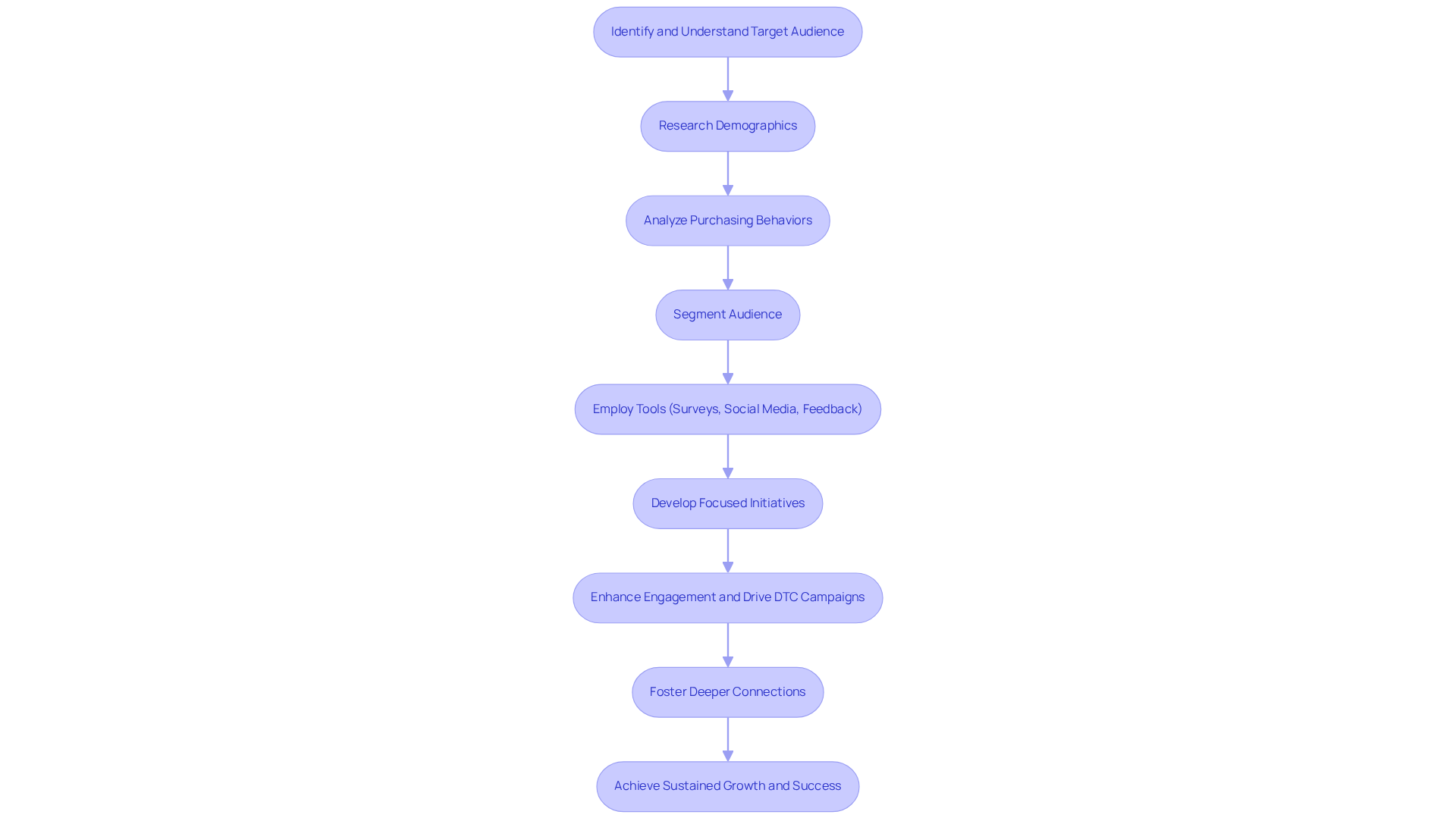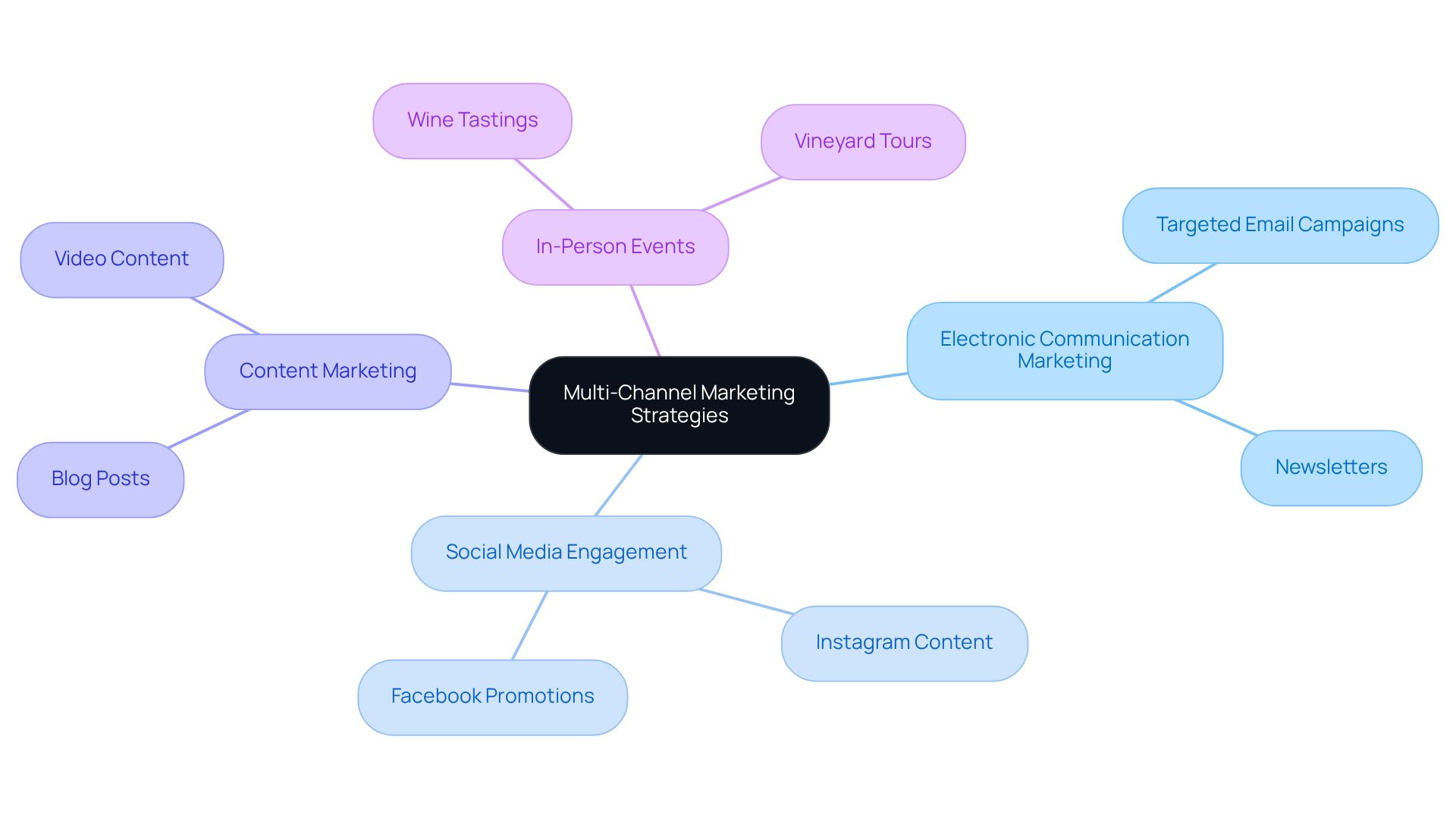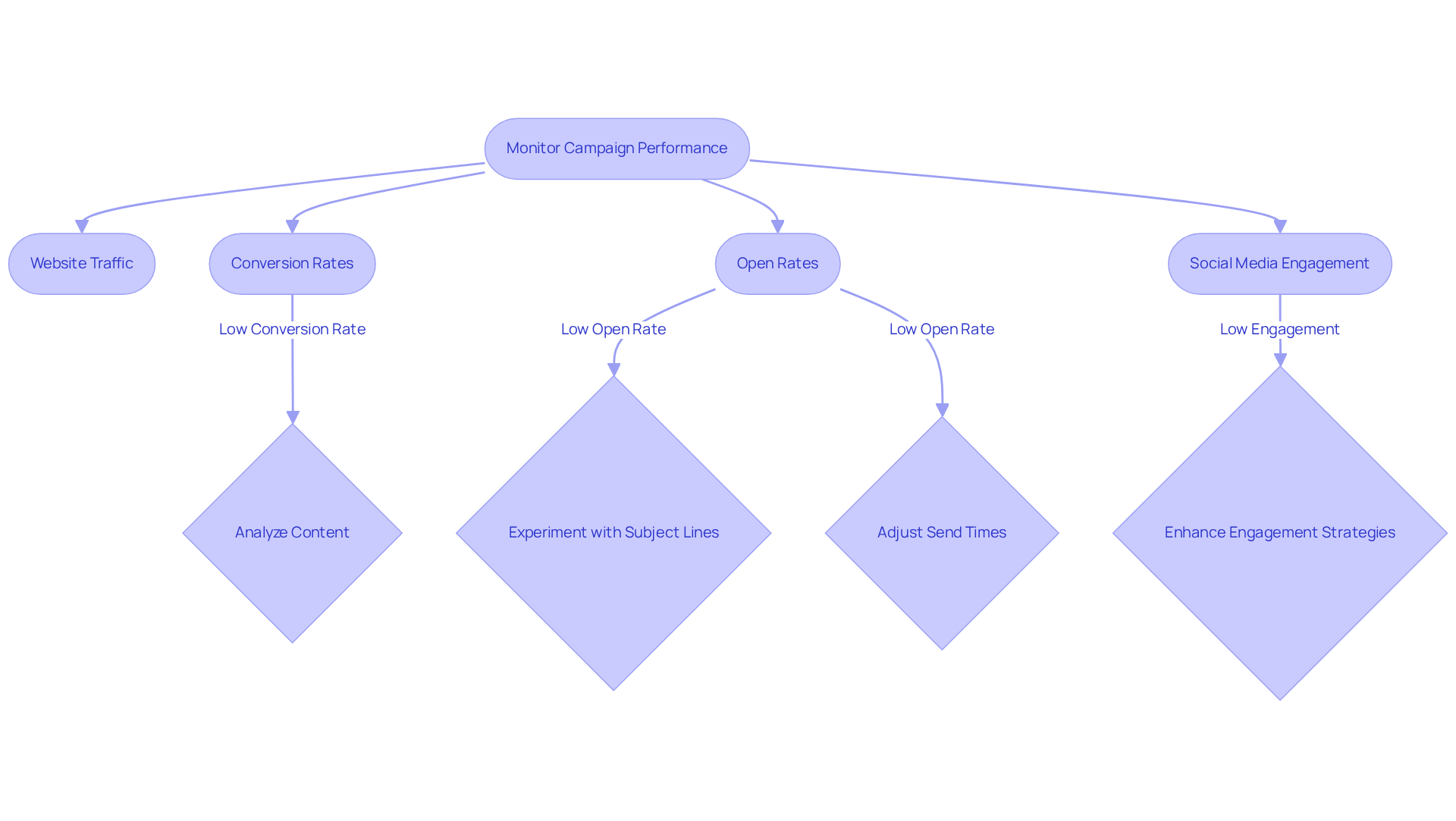Overview
Successful Direct-to-Consumer (DTC) wine campaigns hinge on the establishment of clear objectives and a profound understanding of the target audience. By leveraging multi-channel marketing strategies and continuously monitoring performance, brands can not only achieve measurable growth but also foster deeper connections with customers. These practices are not merely suggestions; they are essential for driving sustainable success in an increasingly competitive market.
In this landscape, the importance of a strategic approach cannot be overstated. Are you ready to elevate your wine brand's outreach? By implementing these strategies, you position your business to thrive amidst challenges and seize opportunities for expansion. Embrace the journey towards creating impactful customer experiences that resonate and endure.
Introduction
Crafting a successful direct-to-consumer (DTC) wine campaign requires more than just a great product; it demands a strategic approach that resonates with consumers. In an increasingly competitive wine industry, producers must not only define clear objectives but also understand their audience and leverage multi-channel marketing strategies.
What challenges do wineries face in navigating this complex landscape? How can they ensure their campaigns not only attract attention but also foster lasting customer loyalty?
This article explores best practices that can elevate DTC wine marketing efforts, empowering producers to thrive in an ever-evolving market.
Define Clear Objectives for DTC Campaigns
To launch successful DTC wine campaigns, producers must first establish clear objectives that are aligned with their broader business aspirations. For example, a vineyard might set a goal to:
- Increase online sales by 30% over the next quarter
- Expand its email subscriber list by 50% within six months
These objectives should be specific and measurable, facilitating straightforward tracking of progress. Moreover, integrating strategies that enhance brand storytelling and foster customer loyalty can substantially influence successful DTC wine campaigns. By regularly revisiting and adjusting these objectives based on performance data, producers can ensure that their campaigns remain relevant and effective, ultimately driving sustainable growth and securing the future of their establishments.

Identify and Understand Your Target Audience
Wineries must prioritize investing time in researching and understanding their target audience. This essential step involves a thorough analysis of demographic data, purchasing behaviors, and preferences. For instance, a vineyard may discover that its primary clientele consists of millennials who favor sustainable and organic wines. By segmenting the audience into distinct groups, producers can tailor their messaging and promotional channels accordingly.
Employing instruments such as surveys, social media metrics, and customer feedback provides critical insights into consumer preferences. These tools enable wine producers to develop focused initiatives that resonate with their audience. Understanding these dynamics not only enhances engagement but also drives successful DTC wine campaigns that resonate with consumer values. Ultimately, this approach fosters deeper connections between producers and their clientele, paving the way for sustained growth and success in a competitive market.

Leverage Multi-Channel Marketing Strategies
To enhance the effectiveness of successful DTC wine campaigns, producers must adopt multi-channel promotional strategies that not only advertise their offerings but also cultivate customer loyalty. Effective strategies may include a blend of:
- Electronic communication marketing
- Social media engagement
- Content marketing
- In-person events
For instance, a vineyard could promote a new wine release through a targeted email campaign, share behind-the-scenes content on Instagram, and host an engaging tasting event at their location.
By ensuring that messaging is consistent across all channels, vineyards can create a unified brand experience that resonates with consumers and transforms casual buyers into loyal club members. Furthermore, leveraging analytics to track performance across these channels allows wineries to refine their strategies and optimize marketing efforts. This approach ultimately drives predictable DTC revenue and supports successful DTC wine campaigns.
In a competitive market, the integration of these strategies is not merely beneficial; it is essential. Are you ready to elevate your brand and foster lasting customer relationships?

Monitor Performance and Adjust Strategies Accordingly
Wineries must establish a robust system for regularly monitoring the performance of their successful DTC wine campaigns. This includes tracking vital metrics such as:
- Website traffic
- Conversion rates
- Open rates for messages
- Social media engagement
For example, if a specific email campaign demonstrates a low open rate, it may be prudent to experiment with various subject lines or send times to boost engagement. By utilizing tools like Google Analytics and social media insights, vineyards can gather valuable data that informs these necessary adjustments.
Moreover, by transforming casual buyers into loyal club members through strategic adjustments and compelling storytelling, wineries can drive consistent growth and enhance their marketing effectiveness, ultimately contributing to successful DTC wine campaigns. This ultimately leads to the achievement of their defined objectives. The integration of these practices not only strengthens customer relationships but also positions wineries for sustained success in a competitive market.

Conclusion
Establishing successful direct-to-consumer (DTC) wine campaigns requires a strategic approach that encompasses clear objectives, a profound understanding of the target audience, multi-channel marketing, and ongoing performance monitoring. By aligning these elements, wineries can enhance their marketing effectiveness, build lasting relationships with their customers, and ultimately drive sales while fostering brand loyalty.
Key practices include:
- Defining specific and measurable objectives that guide campaign efforts
- Investing in audience research to tailor messaging
- Leveraging diverse promotional channels to create a cohesive brand experience
The continuous monitoring of performance metrics is crucial, as it allows producers to refine strategies in response to consumer preferences and market trends effectively.
In a competitive landscape, integrating these best practices is essential for wineries aiming to thrive. Embracing these strategies positions brands for immediate success and lays the groundwork for sustainable growth. As the wine industry evolves, producers are encouraged to implement these insights and remain agile, ensuring that their DTC campaigns resonate deeply with consumers and elevate their brand presence in the market.
Frequently Asked Questions
What are the first steps to launching successful DTC wine campaigns?
The first step is to establish clear objectives that align with broader business aspirations.
Can you provide examples of objectives for DTC wine campaigns?
Yes, examples include increasing online sales by 30% over the next quarter and expanding the email subscriber list by 50% within six months.
Why is it important for objectives to be specific and measurable?
Specific and measurable objectives facilitate straightforward tracking of progress and help assess the effectiveness of the campaigns.
How can brand storytelling and customer loyalty impact DTC wine campaigns?
Integrating strategies that enhance brand storytelling and foster customer loyalty can substantially influence the success of DTC wine campaigns.
Should objectives be static throughout the campaign?
No, it is important to regularly revisit and adjust objectives based on performance data to ensure campaigns remain relevant and effective.
What is the ultimate goal of establishing clear objectives for DTC wine campaigns?
The ultimate goal is to drive sustainable growth and secure the future of the wine establishments.




